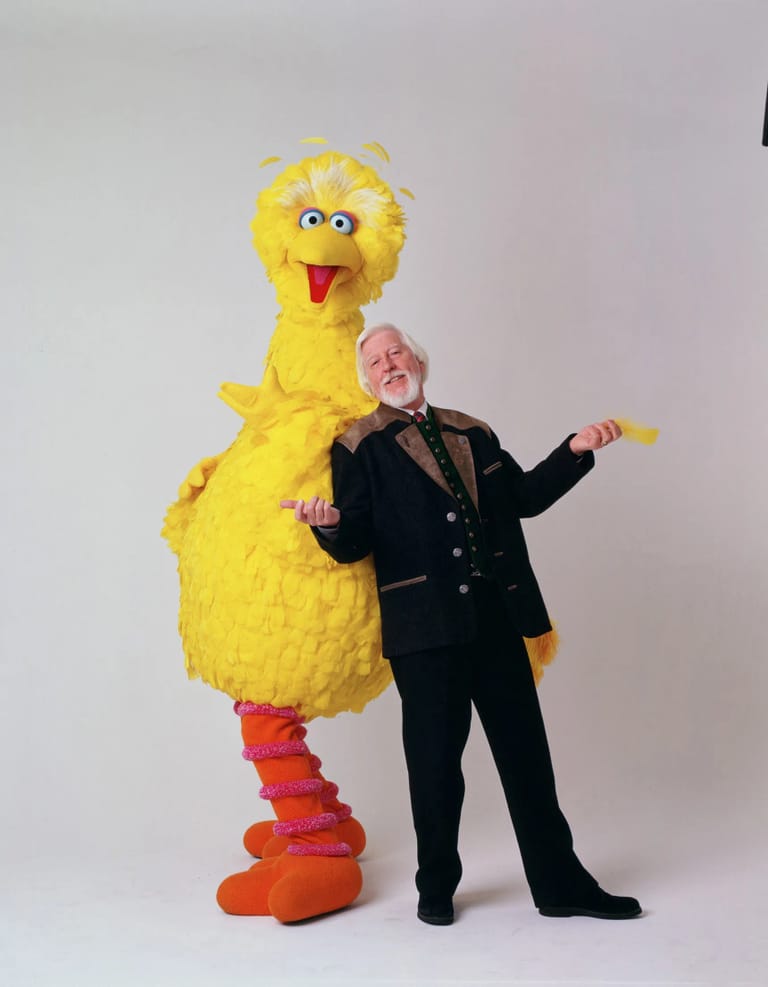Sunny day, sweepin' the clouds away
On my way to where the air is sweet
Can you tell me how to get, how to get to Sesame Street...
Sorry, but if I have to hear the "Sesame Street" theme in my head as I write this review, it's only fair you join me --- and don't even pretend you're not hearing it at this very moment.
That's the thing about "Sesame Street." It's in our heads and in our hearts and in our memories forever, and we're all the better for it. So yes, the documentary "Street Gang: How We Got to Sesame Street" is an unabashed love letter to the first 20 years of the most influential, most beloved and most enduring children's program in television history, and why not? Nobody wants to see an expose ripping the lid off Oscar the Grouch's trash can to tell the real story about the longstanding feud between Bert and Ernie and the ugly truths about Big Bird's prima donna behavior, and I'm just kidding, none of that ever happened! By all accounts, Big Bird was a real sweetheart to work with, and Bert and Ernie got along just fine off set.
Told in sober, straightforward, no-frills fashion --- a bit of a letdown, given the groundbreaking creativity of the subject matter --- "Street Gang" takes us back to the late 1960s, when Children's Television Workshop co-founder Joan Ganz Cooney (now 91 and a participant in the doc) and the late writer-producer-director Jon Stone co-created a revolutionary children's show aimed at educating and entertaining kids, particularly minorities in the inner cities. We see fascinating archival footage and still photos of pitch meetings (pure "Mad Men" stuff) and test videos and the building of the remarkable set, which looked like a real street in a real city.
As for the Muppets: Jim Henson's fantastically funny puppets were already popular on late-night talk shows and variety programs, but they achieved true icon status when the idea was hatched to have Big Bird and Oscar the Grouch et al., interacting with the humans right there on the block, no explanations provided or questions asked. That's just the way it was on Sesame Street. You were accepted whether you were white or Black or Latino or a giant yellow talking bird. Genius!
"Sesame Street" was an instant sensation --- though there was some resistance from television programming to its integrated setting, as we see in news footage in which a Mississippi public television station representative tries to justify not airing the program. (When Mississippi's commercial TV stations started carrying the show, the public TV station changed its tune.)
We learn of the evolution of Caroll Spinney's Big Bird, as the decision was made to basically make him a 4-year-old, so he'd reflect the mindset of the young "Sesame Street" viewer. (This was never more evident than in the 1983 episode that addressed the death of actor Will Lee by having Big Bird process --- with the help of his human friends --- the death of Lee's character, the shopkeeper Mr. Hooper.) And we're reminded of Sesame Street's long and admirable history of addressing social issues when we see a clip of Jesse Jackson on the show in 1972, leading a group of children in a chant of "I Am Somebody."
Director Marilyn Agrelo does a remarkable job of following multiple storylines; it really did take a village to build "Sesame Street." We follow the journeys of Ganz and her Children's Television Workshop partner Lloyd Morrisett; legendary music composer Joe Raposo (who spoke to the outcast in all of us when he wrote "Being Green"); actors such as Sonia "Maria" Manzano and Emilio "Luis" Delgado, and, of course, Jim Henson. In cases where the subjects are no longer with us, we often hear fond memories from their grown children. We also feel the pain of Matt Robinson, who was the original Gordon on the show and created a Black Muppet named Roosevelt Franklin --- a character that was phased out after criticism from Black parents that Roosevelt perpetuated stereotypes.
"Street Gang" draws the curtain on the "Sesame Street" timeline with the death of Jim Henson in 1990, at the age of 53. Mr. Henson left behind a body of work that continues to endure today, but a great deal of his legacy remains on Sesame Street, and this film tells us exactly how he and everyone else got there.












